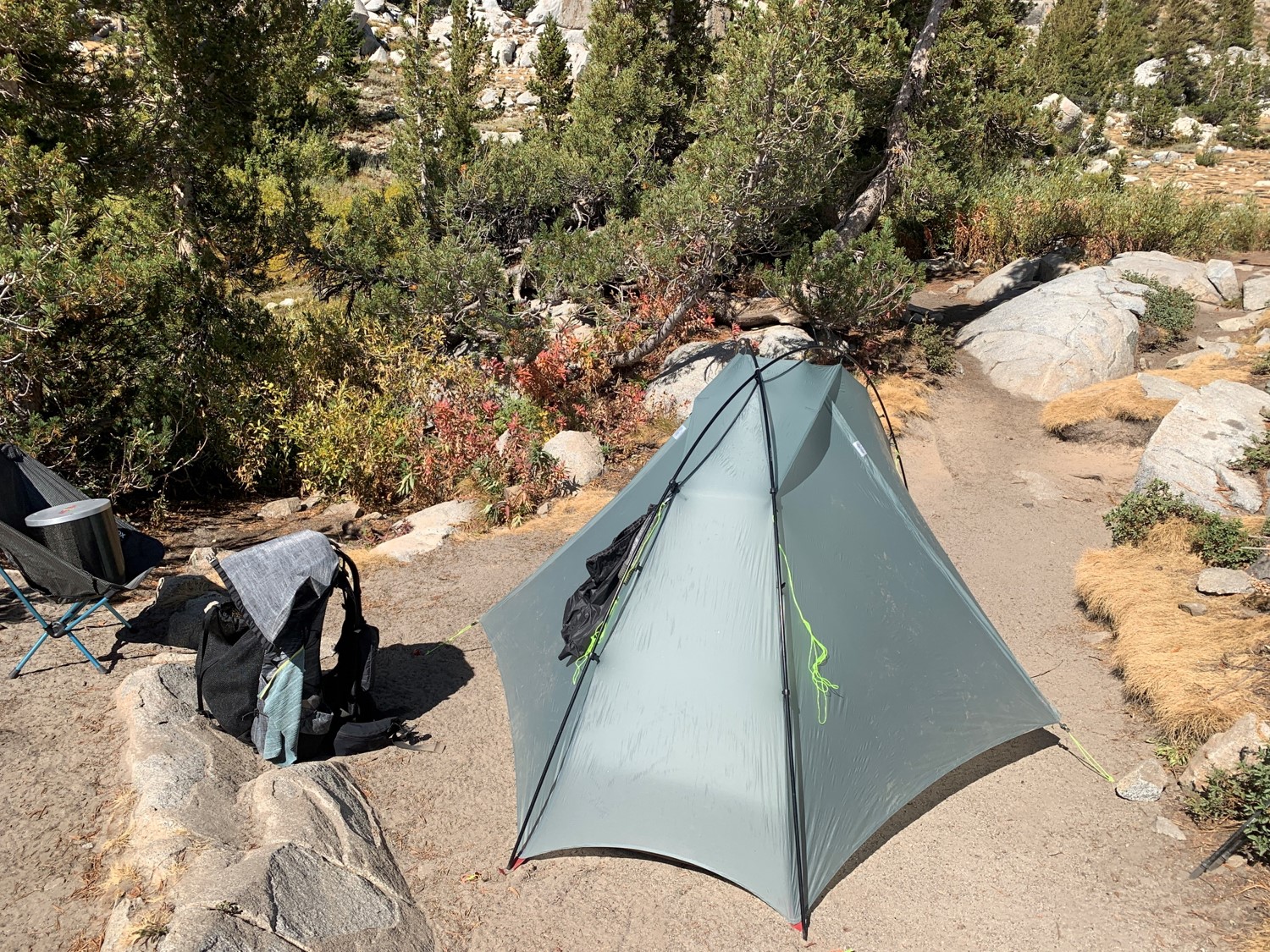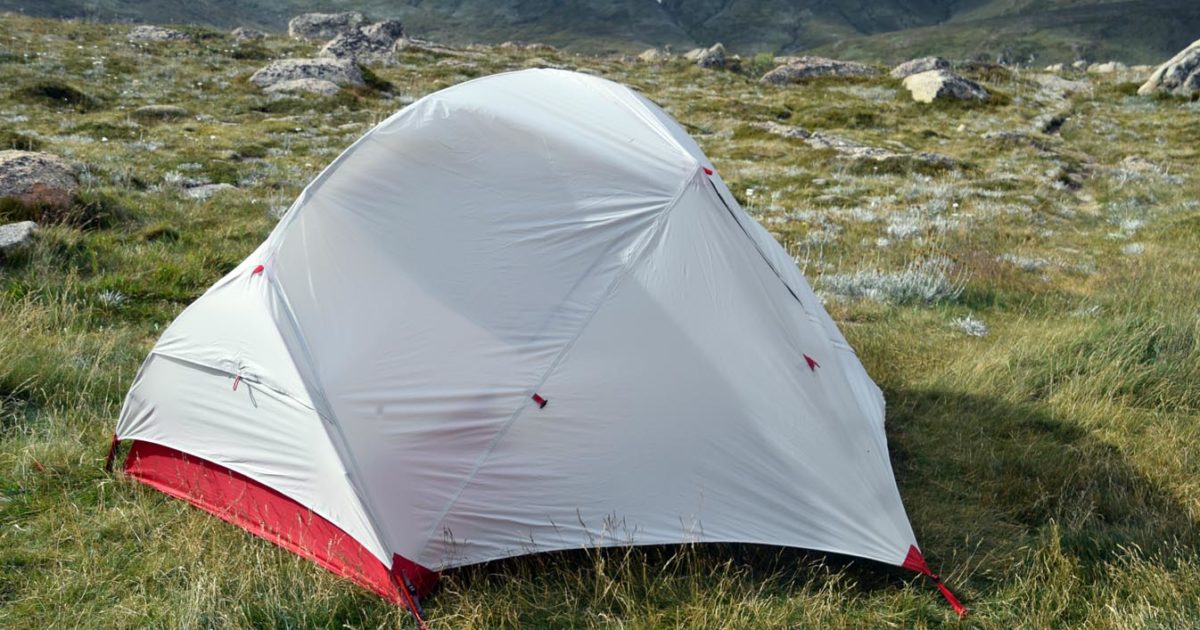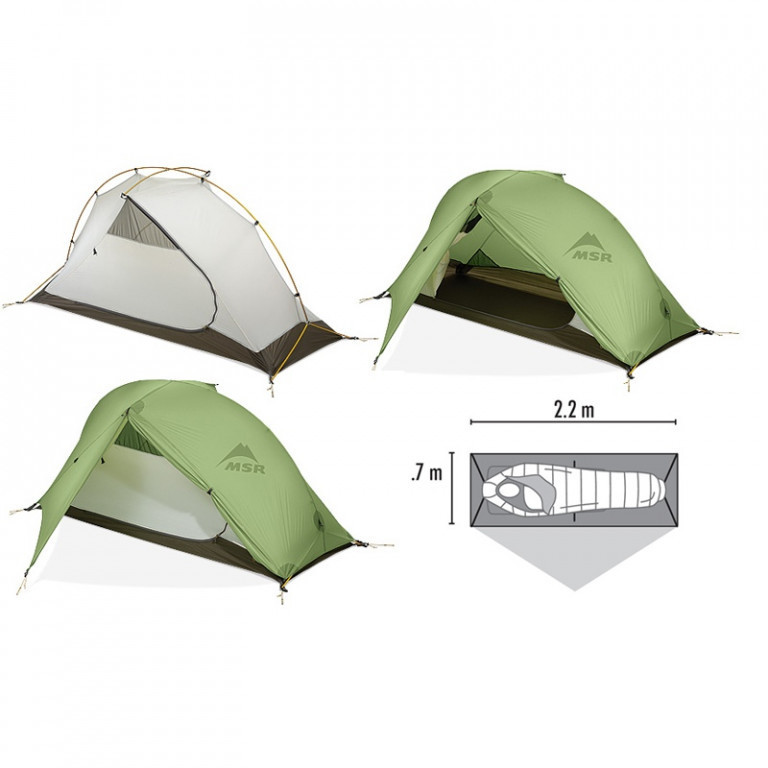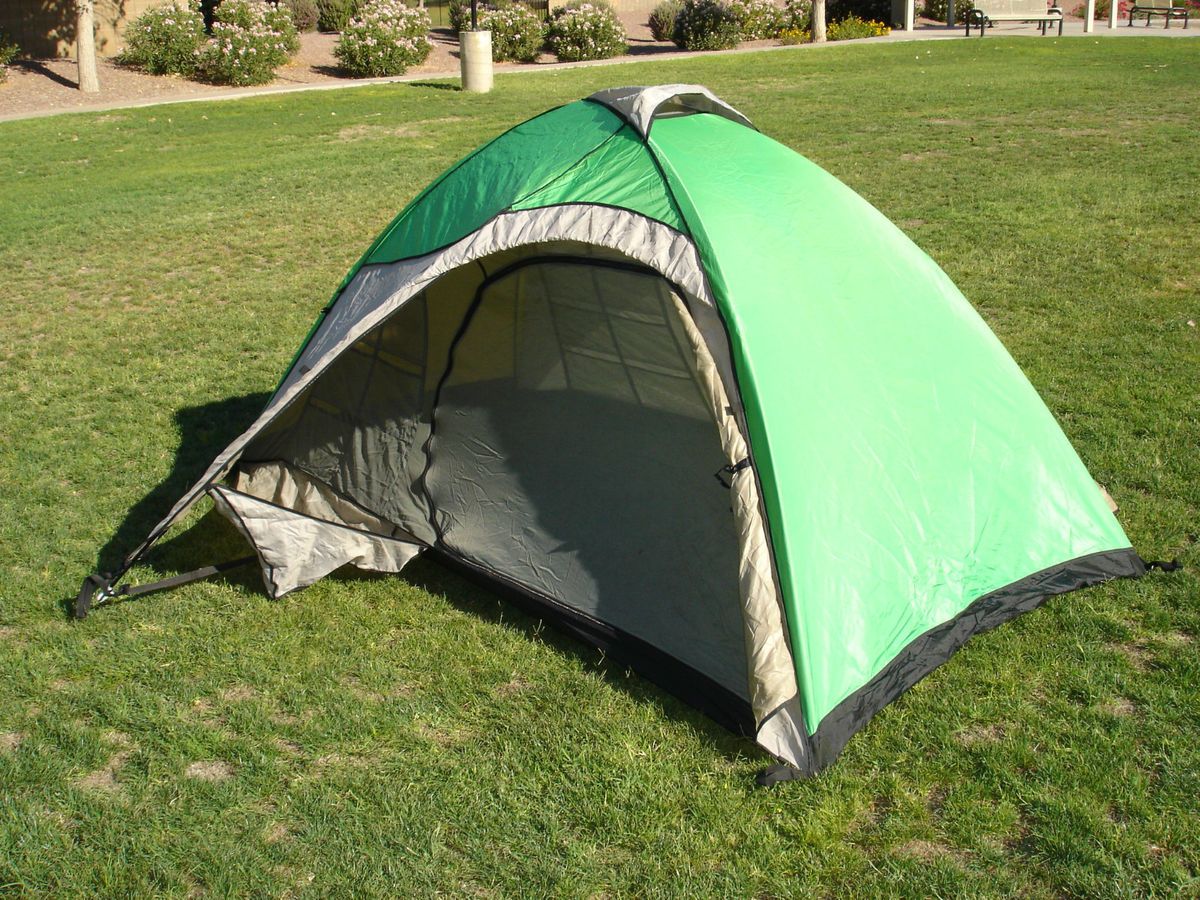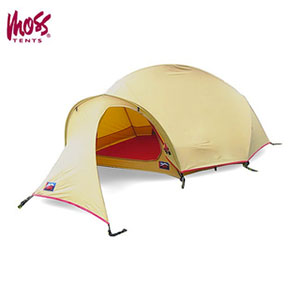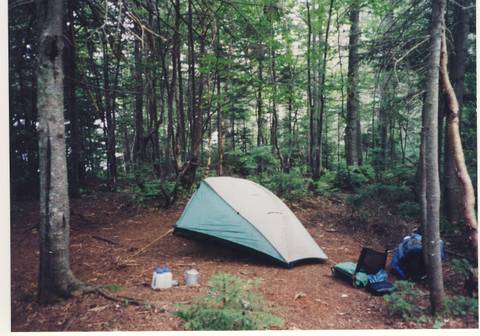Topic
1P dual-wall dual-vestibule freestanding tent?
Forum Posting
A Membership is required to post in the forums. Login or become a member to post in the member forums!
Home › Forums › Gear Forums › Gear (General) › 1P dual-wall dual-vestibule freestanding tent?
- This topic has 88 replies, 20 voices, and was last updated 4 years, 5 months ago by
 Brett A.
Brett A.
-
AuthorPosts
-
Oct 20, 2019 at 2:38 am #3614770
Anyone know what the differences/tradeoffs are between the Revolution and the Mirage? They look identical on the top-down CAD drawings, the pics suggest
1) Solid tub runs higher on the Mirage
2) The Mirage has this vertical section in the foot area that may help with wall verticallity and interior space but perhaps compromise wind worthiness a bit if pitched “the wrong way”
3) The Mirage is marginally lighter than the Revolution (34 vs 39 oz with the mesh inner)Oct 20, 2019 at 2:51 am #3614774The Mirage is a single-wall/hybrid tent. The inner cannot be separated from the outer. Photos from Drop are the best ones I’ve found: https://drop.com/buy/big-sky-mirage
I debated getting a Mirage (and still think about buying one someday…), but thought the double wall would be better for condensation. That said, a 2-person Mirage weighs about the same as my 1-person Revolution.
@ Sam: here’s a photo showing both vestibules.
 Oct 20, 2019 at 3:12 am #3614776
Oct 20, 2019 at 3:12 am #3614776Thanks John, Sam, Rob, “me of course”, Ben, Franco, and everyone else who provided the tons of useful info on this thread. As soon as BSI answers my email asking for clarification on the denier and other differences between the “UL gray” and the other fabrics in their catalog (there is a 2 oz difference in weight) I will pull the trigger on a Revolution 1P. I strongly prefer the color of the gray, but if they have thinned the fabric to save 2oz I will opt for the blindingly bright yellow.
This will be a significant milestone for me, as it will mean that I will now own more tents than photo backpacks (I do landscape photography for a hobby and am somewhat of a photo backpack wh*re, currently 4 or so in my possession).
Oct 20, 2019 at 3:36 am #3614779For an additional 2.5 oz., you get lots more room and 3″ more headroom in the 2P Mirage. As far as condensation, I always leave my doors open for air flow over night. If it’s raining, I try and leave a single door open on each side, perhaps staked out a bit to keep the rain away from the inner, for air flow. Usually keeps condensation to a bare minimum, if I end up with any at all.
Oct 20, 2019 at 4:18 am #3614781I love my Tarptent Moment DW. It has a pole, and needs four stakes, is that “free standing?” I probably don’t know what that means really, since I’ve never camped in a place where I didn’t need to stake my tent. Even if the evening was calm, I wouldn’t sleep well knowing a storm or wind could kick in during the night. I just always secure my tent! The space is great for one, doesn’t feel coffin like to me, and has two doors/vestibules which are very convenient. It could be a bit lighter; I’d love a Moment Li! This tent is so easy to pitch and adjust, not fiddly at all and I’m not super skilled at pitching tents. I have it up in under 3 minutes, ready for a storm! I don’t touch the mitten hooks, I just leave it all attached. Even when it’s been pouring, I haven’t had the outer soak the inner badly enough that it doesn’t dry out pretty quickly. But it’s easy to detach anyway, just a quick twist, even with my arthritis, no biggie.
Oct 20, 2019 at 5:00 am #3614788Funny thing is that the Moment stands up with two stakes only. That is what you need to also have a “freestanding” tent set up with vestibules in place (apart from very few exceptions) and two less than many so called “semi-freestanding’.
The Moment does work better with the two guylines in place (hence 4 stakes) but then again many “freestsnding” tents also work a lot better with guylines in place…
I think that all too often people get stuck on terminology disregarding the practical side.
Example
Moment (2 stakes min )

typical 2 door freestanding tent (2 stakes min ) :

semi-freestanding tent ( 4 stakes min )
 Oct 20, 2019 at 6:19 am #3614796
Oct 20, 2019 at 6:19 am #3614796Disagreeing with someone with Franco’s knowledge and experience is putting me on thin ice but…
I don’t think it’s the number of stakes that defines “freestanding”, at least not for me. Many (most?) trekking pole supported tents require multiple stakes firmly planted in order for the shelter to achieve any structural integrity. That number is usually in the 4-6 range. This can almost always be achieved with sufficient degree of hassle.
Freestanding tents require a similar number of stakes, but those stakes are usually not critical for achieving structural integrity. For example, the MSR in the 2nd image requires zero stakes for the basic structure to stand up and provide ***some*** protection in mildly foul weather. Staking of the doors is required to keep them from flapping, but if you don’t have the room or terrain for that you can just tack them down with any means possible and still have a shelter that does not fall on your face.
Of course in truly foul weather that distinction disappears and any shelter, self supporting or not, needs to be staked out solidly to provide protection.
Oct 20, 2019 at 12:51 pm #3614805Apologies in advance for the thread creep, and for perhaps wading into a philosophical debate, but I can’t help myself. From the OP:
“…occasionally I want to go with free-standing tent”
May I suggest a good (and proper?) definition of “free-standing” as this: With the poles in place and the structure fully erected. one can pick the structure up and reposition it while maintaining it’s shape and dimensions. This makes small adjustments to location or rotation to avoid roots/stones/depressions/etc when determining an “optimum” site placement simple and easy. When people tell me they want a free-standing tent I find this is a key element of what they are after. It’s a tremendously valuable ability and, while missing from trekking pole supported tents, can be overcome with alternative techniques and experience.
Shelters like the BA Fly Creek/Tiger Wall or MSR Freelight with “Y” shaped poles and requiring staking of the foot corners in order to complete the setup get close, but are in my opinion best categorized as “semi free-standing”.
Oct 20, 2019 at 2:55 pm #3614819John, thanks for sharing the specs on the BSI Revolution… I prefer a solid inner for some of my activities, and as I mentioned, use an older MSR Hubba HP.
With Fibraplex Poles and Tyvek ground sheet it weighs 44 oz. all-up, very similar in weight, size and function to the Revolution with solid interior, but sans double doors. Did I not have the Hubba, I’d think long and hard about the BSI Revolution… looks like a great 1P tent that checks a lot of boxes!
 Oct 21, 2019 at 3:22 am #3614969
Oct 21, 2019 at 3:22 am #3614969Freestanding; mostly not quite, due to vestibules. I have yet to see a truly freestanding tent with vestibule(s). The idea of moving the tent around once set up has an appeal, but having had a freestanding tent – no vestibules, BD Lighthouse -I don’t think I ever actually did so in the field. A better way of thinking of it, for my use anyway, is that the closer to freestanding a tent gets, the less load there is on the stakes, as they are less essential to keeping it erect. Which only really matters for situations where stake placements are difficult and/or sketchy. Of course it can be a convenience, and that may be worth it or not depending on individual preference.
But for most situations where solid stke placements can be had, I find myself thinking tunnel-ish thoughts when stormworthiness at a light weight is the goal. Mostly because of the very direct lines of tensile force you get with tunnels and tunnel variations. In the context of this d iscussion the Tarptent Moment comes to mind. I have been craving one for shoulder seasons in the Sierra. Two soild stakes (and they must be very solid) and you are good to go for most situations; if things get radical, two more would make it really stout and i expect far more capable than the various Spurs and their ilk (though I have one and like it, for different reasons).
Oct 21, 2019 at 4:13 am #3614972I happen to have a fully freestanding tent, including vestibules .
The Bibler Escalante Pinon (came out in 1995 in two sizes , Pinon and Juniper )

In 2008 Hilleberg released a similar 3 pole design ,with the Soulo and Allak, also fully freestanding.
 Oct 21, 2019 at 1:35 pm #3614992
Oct 21, 2019 at 1:35 pm #3614992More thread drift…
The most bombproof tent I ever owned. North Face VE24 that I got in 1979. A true freestanding tent, no vestibule. Have had it in truly severe wind and would take this design over any other for truly brutal conditions… but of course ALL tents need staking in some way.


 Oct 21, 2019 at 4:32 pm #3615017
Oct 21, 2019 at 4:32 pm #3615017The TNF domes of the late 70’s early 80’s were things of beauty.
Oct 21, 2019 at 5:57 pm #3615031There are some places that provide platforms for tents and freestanding is simpler than improvising ways to secure guylines. That isn’t common.
If you’re at a beach and the ground isn’t solid, freestanding is simpler. But usually it’s windy at the beach and you’d want to secure guylines for a freestanding tent, too. There are, of course, ways of securing them in sandy ground or snow.
I’m not sure about what other situations would require freestanding. If it’s simply a preference, there’s nothing wrong with that. HYOH and all that.
Oct 21, 2019 at 10:14 pm #3615070That VE 24 was a 9 lbs tent that sold in the late 70’s for around $350, the equivalent of about $1300 now .
On another forum someone mentioned how he only paid £75 in 1975 for a 4 season TNF tent. (it was about how tents are expensive now…)
At the time ,working in London , I was taking home £22 per week.
Oct 22, 2019 at 2:48 am #3615155If you can find one.
A 20-25 year ild <span style=”text-decoration: underline;”>Moss Outland</span> (or MSR, depending on the year) could suffice. Not light, but as strong as it gets for a 1p freestanding shelter. Oct 22, 2019 at 5:12 am #3615160
Oct 22, 2019 at 5:12 am #3615160There are two versions of the Outland (that I know of)
The lighter version is about 5.5 lbs but has one small vestibule.(in usable space)

The other one , the Hooped version, still has one vestibule but rather large. It is however over 6 lbs.
 Oct 22, 2019 at 5:16 am #3615163
Oct 22, 2019 at 5:16 am #3615163Trouble with tent-mania, is adequate storage for all of them. Once pitched most of mine (Helsport, Moss, etc) at a friend’s yardsale and ended up selling the whole lot to a trip leader for $500. Still wonder if somewhere in the mountains the kids ever had them all pitched somewhere. Once rid of them, could focus on much lighter and durable tents. A blessed relief. Nice photos though.
There are many threads on BPL about distinctions between freestanding and non; but conceptually it may be helpful to think of the former as self-supporting, and the latter needing stakes only to anchor them so they don’t blow away. Despite its excellence, a Moment doublewall for example needs stakes to keep it upright. It is kind of nuts to use a pole to support a vestibule that also functions in lieu of a guyline when staked out,. So there are few 100% freestanding tents around, although that front vestibule in Fanco’s first photo above looks suspiciously like it’s also supported by a stake. But photos can lie, especially these days.
Boyan, the link to one of Eric B’s threads above mentions a number of other tents with inners and outers that pitch together, even without external poles. Macpac calls them “Swift-Pitch.” Some of them may be freestanding, but they are on the heavy side: https://www.macpac.co.nz/search/go?q=Swift-Pitch&lang=en_NZ
I had one make by Eureka! that was great with some modifications, but the PU coat became unreliable after a number of years. It was OK with normal rain, but heavy rain came through it: Oct 22, 2019 at 5:24 am #3615167
Oct 22, 2019 at 5:24 am #3615167Hi Sam, yes I looked at the Mapacs but they feel like a bit of overkill for me. At the moment I am more or less settled on the Chinook 1P. I like the simplicity of the design, as well as the fact that you can switch from a 4 season to 3 season config with a single pole. Yes, the Moment DW can do that too, but for whatever reason the design philosophy does not appeal to me. Just waiting on a final clarification from BigSky on the differences between their 30D and 20D fabrics before pulling the trigger. Tim from BigSky has been extremely prompt in answering emails.
Oct 22, 2019 at 5:51 am #3615174Darn, thought you were going with the Revolution 1P. Oh well ….
Oct 22, 2019 at 5:57 am #3615177Me too. But as best as I can tell the Chinook 1P with two poles (vestibules staked out) is the exact same beast as the Revolution 1P. Add a third pole and you have a 4 season tent. If Tim confirms that this is the case then it becomes a slam dunk decision, as long as I can order it with the mesh inner – which you can do on BSP but not on BSI. Go figure.
Oct 22, 2019 at 9:25 am #3615181Sam :
” So there are few 100% freestanding tents around, although that front vestibule in Fanco’s first photo above looks suspiciously like it’s also supported by a stake. But photos can lie, especially these days.”
what tent are you referring to ?
Oct 22, 2019 at 2:42 pm #3615208anyone remember the Quest Preying Mantis?
And Franco, there was an all netting version of the Outland as well back before they introduced the hooped version.
And thanks for the pic of the Escalante. I had forgotten about it’s integral vestibule!
Oct 22, 2019 at 3:28 pm #3615215The TNF domes of the late 70’s early 80’s were things of beauty.
Indeed. Mine got used Maine to Alaska with points in between.
i paid $280 for it in 1979… a princely sum. Gear has gotten so affordable these days. I’m often surprised, for instance, when folks complain about a $500 Western Mountaineering bag… in 1970’s and 80’s dollars I spent more than that on USA made bags of far lesser down quality.
More thread drift :)
Oct 23, 2019 at 3:27 am #3615311Franco,
Your photo of the Bibler Escalante Pinon.
-
AuthorPosts
- You must be logged in to reply to this topic.
Forum Posting
A Membership is required to post in the forums. Login or become a member to post in the member forums!
Our Community Posts are Moderated
Backpacking Light community posts are moderated and here to foster helpful and positive discussions about lightweight backpacking. Please be mindful of our values and boundaries and review our Community Guidelines prior to posting.
Get the Newsletter
Gear Research & Discovery Tools
- Browse our curated Gear Shop
- See the latest Gear Deals and Sales
- Our Recommendations
- Search for Gear on Sale with the Gear Finder
- Used Gear Swap
- Member Gear Reviews and BPL Gear Review Articles
- Browse by Gear Type or Brand.

